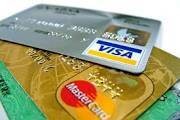1) Check to see if you can get a better contract, or make payments based on average monthly cost.
- Determine how much electricity you use. Use the monthly electric bills from the last year to calculate an approximate value.
- (If possible) Compare different offers from electrical companies; chose the one that is the cheapest (lowest cost per kilowatt hour).
- Find out if there is an OFF-PEAK time of the day when the rate is lower and use that time for most electricity needs (e.g. running washing machine, dish washer, or cooking). This will likely require additional costs for special metering hardware to track usage during those times.
2) Buy energy efficient devices.

- Don't buy devices that are bigger than necessary (buy and use small pressure cookers whenever possible). Ask for energy efficient devices. Don't forget to check the stand-by consumption. Check if there is a label like Energy Star.
3) Switch off or unplug devices when not in use
- If a device doesn't have an on/off switch, use a plug connector with an on/off switch. Connect for example your TV and the loudspeakers with a plug connector. You can switch off both devices by just one action. Connect your DVD recorder with a separate socket since it is likely that you have to readjust it if you would switch it off.
- Don't forget that power adapters (transformers for rechargeable appliances) also consume energy. Unplug them when not in use.
- Put each cooling device on a place which is as cold as possible, away from heat sources like radiators, direct sunlight or other big energy consuming devices.
- Check that the cooling device is at least 5cm (2 inches) away from the wall and that the air can circulate well.
- Increase the inner temperature of the cooling devices. 7°C (45°F) are enough for the fridge and -18°C (0°F) are enough for the freezer.
- Keep the cooling devices tidy, label the items in the freezer, so that you can get the food item as quick as possible.
- Fill unused space with padding such as polystyrene or just a blanket.
- Keep the door of these devices closed.
- Check the sealing gasket of the cooling devices: Put a switched on torch (lamp) in the fridge and close the door. Check if the sealing gasket is damaged and buy a new one if necessary.
- Act energy efficient. Let the food cool down before you put them in a cooling device and warm up frozen food in the fridge.
- Defrost the freezer if there's a layer of ice.
Lights:
- Find effective places for lights and light switches.
- Paint your rooms in a bright color. More light is reflected by those brighter walls and so you need less light to make your room bright.
- Replace regular light bulbs with compact fluorescent bulbs. It is economical to replace a light bulb if it burns for more than half an hour a day. Use high quality L.E.D. - Light Emitting Diode (Best type) or C.F.L - compact fluorescent bulbs.
- Don't use ceiling floodlights, unless there L.E.D. types.
Stove:
- Use the right pots. Use pots with a diameter that is as small as possible. Put these pots only on hobs that fit to them or are smaller. Try to use a pressure cooker if you're cooking for a considerable time. Check that the bottom of the pot is even. Keep the pots closed as long as possible. Without a lid you'll loose about 2/3 of the energy.
- Reduce the amount of water you use while cooking.
- Turn the stove off 5 minutes before you reach the cooking time.
- Chose a gas stove or an induction cooker if you buy a new stove.
- Boil water with an electric kettle instead of the stove.
Oven:
- Don't preheat the oven.
- Bake with circulating air.
- Use the oven several times if it's already hot.
- Keep the oven's door closed as long as possible.
- If the oven has already reached the final temperature turn it off 10 minutes before the food is ready.
- Use a toaster or the microwave if possible instead of the oven.
Dishwasher and washing machine:
- Check if these devices are connected with the hot water pipe.
- Make the devices as full as possible.
- Reduce the water temperature and use energy and/or water saving modes.
Avoid the air conditioner. (You need 3 times more energy per degree to cool a room than to heat a room).
- Ventilate during the night or early in the morning in order to store the coolness for the day.
- Keep the coolness in the house during the day. Close the shutters and keep your windows and doors closed.
- Use a fan instead of an air conditioner.
Avoid heating with electric energy.
- While electric heat is the most efficient, it is often the most costly. If you can't change this or you use another energy source (natural gas, propane or heating oil) you can save money on electricity if you lower your heating costs.
Avoid the clothes dryer.
- Dry your wet clothes on a laundry line. If you can't follow this step try to fill the drier as full as possible and use the mode "iron-dry".
Optimize the energy consumption of your PC
- Modern PCs can be set up to enter energy saving modes from both the BIOS settings page and directly from the Windows Operating system. Enable "Sleep" and "Hybrid Sleep" for desktops and "Hibernation" for notebook PCs running Windows.


 If you purchase goods with a credit card, there is an important change being introduced from 1st August 2014. We simply wanted to remind people that from this date, people will no longer be able to sign to authorise a credit card transaction at point of sale - and to ensure that they have a PIN from their financial institution.
If you purchase goods with a credit card, there is an important change being introduced from 1st August 2014. We simply wanted to remind people that from this date, people will no longer be able to sign to authorise a credit card transaction at point of sale - and to ensure that they have a PIN from their financial institution.